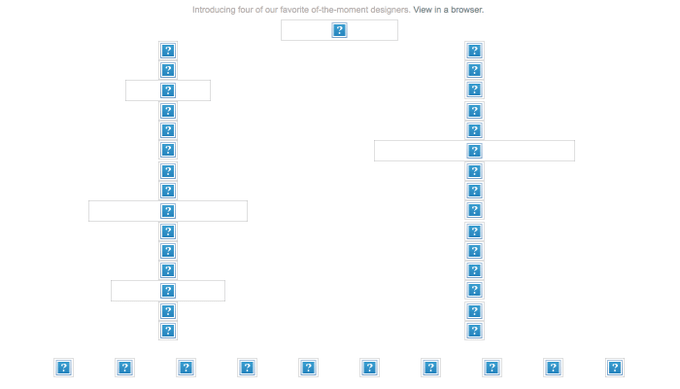There are a so many different facets to being a web developer in the workplace today. Some will be solely responsible for taking the concepts and mind farts of designers and turning them into something real, whilst others will incorporate a lot of that design process into their own personal workflow. Others may find that as part of their role as a developer, they need to wear a few different hats, including SEO specialist and email campaign wizard.
In the spirit of inclusiveness, knowing that so many people think of so many different things when it comes to having an idea of what we as developers do, I thought I'd spend some time talking about something that might not have occurred to a few of us ... email. Also for those of you who make it to the end, I've included a picture of a horse.
When sending email campaigns there are a few things that we need to consider:
- Will it display on the viewer’s email client?
- Will the text/ image ratio mean that it gets blocked as spam?
- Is the customer able to see the point of the email?
Will it display on the viewer’s email client?
Chances are, probably not. Generally speaking, the most used business email client is Outlook (editor's note: This is an observation based on customer data taken from various sources within my current workplace. Also a guess) which by default will block any and all image content that is attached to an email. This is then further compounded by the fact that it applies its own alt text to the email stating ‘Right-click or tap and hold here to download pictures. To help protect your privacy, Outlook prevented automatic download of this picture from the Internet.’
It’s not entirely bad news though as there is some support for images as default in webmail clients such as Gmail (because why wouldn't you let Google have more of your information?), which is by far one of the most used webmail applications at the moment (unless the viewer has altered their setting to not display images that is).
Whilst mobile devices are largely happy with images (and by happy I mean they will load images as part of their normal day to day function. I do not speak for the emotional condition of all mobile cellular devices), heavy image based emails will normally be too dense to render quickly enough for viewers to maintain their interest. As with webpages, according to a study completed by google, if a page takes more than 3 seconds to load, you’re likely to lose 70% of the potential customers (Google/SOASTA Research. 2017).
Will the text/ image ratio mean that it gets blocked as spam?
You can thank the early days of the internet and those good old Viagra spam emails for this one.
Generally email spam filters will assess images to determine how much of them are made up of text. As a general rule of thumb, mailchimp (https://mailchimp.com/help/common-html-mistakes/) recommends an 80/ 20 split of text to images in a campaign in order for the email not to get shafted to the spam box.
Facebook (hashtag not promoting, stop listening to me Mark. It's getting weird) actually has a nice little tool that anyone can use to determine whether or not their image is likely to be regarded as ‘spammy’ on their pages. This can also apply to email spam filters so therefore if the result is anything other than ‘Ok’ chances are it’s not going to get anywhere near the primary mailbox.
Is the customer able to see the point of the email?
Probably not …
However, with an 80/20 text to image approach:
Using a combination of styled alt tags, bullet proof buttons and text, this email is able to grab attention without relying on imagery. Should the customer choose, they could then download the images and experience the email in its entirety.
Further Reading
https://www.pinpointe.com/blog/text-based-vs-image-based-emails-which-does-better
https://www.towermarketing.net/blog/html-email-best-practices/
https://litmus.com/blog/why-you-shouldnt-send-image-only-emails
https://organicweb.com.au/marketing/text-image-spam-mailchimp/
I should point out that a lot of the things I've said here are dependent on whether or not you're a fan of the original Power Rangers
I should also point out that sometimes I just type things and leave them in to give the impression that I'm wittier than I am
As promised.







Top comments (2)
HTML Email is the Bane of my existence. When I was working as an Intern, most of my day to day was testing the new layouts and features Marketing wanted to add into the emails. Luckily we were a big enough company that I had basically unlimited credits in whatever tool they used "Inbox Checker".
Last I checked, Outlook still uses Word's rendering engine to output the emails. Good luck getting anything Responsive in your emails that works across all major platforms.
100% agree with everything in that second paragraph.
Outlook does still use Word's engine, but even then there are discrepancies between their displays. I should've ended this post with:
Ultimately, if you want to use email in your digital marketing campaigns, ask somebody else to do it.
Thanks for taking the time to read and comment. I appreciate it.